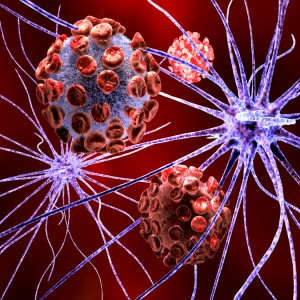Ongoing Clinical Trial Studying Muscle Enlargement in Becker and Limb-girdle Muscular Dystrophy Type 2I

 In a clinical trial titled “Muscle MRI Study of Patients With Becker Muscular Dystrophy and Limb-girdle Muscular Dystrophy Type 2I” (ClinicalTrials.gov Identifier: NCT02165358), a research team in Denmark led by Nicoline Løkken, Bsc at Rigshospitalet in Copenhagen is exploring muscle enlargement observed in patients affected by Becker muscular dystrophy and Limb-girdle muscular dystrophy type 2I.
In a clinical trial titled “Muscle MRI Study of Patients With Becker Muscular Dystrophy and Limb-girdle Muscular Dystrophy Type 2I” (ClinicalTrials.gov Identifier: NCT02165358), a research team in Denmark led by Nicoline Løkken, Bsc at Rigshospitalet in Copenhagen is exploring muscle enlargement observed in patients affected by Becker muscular dystrophy and Limb-girdle muscular dystrophy type 2I.
Becker and limb-girdle muscular dystrophies are both hereditary muscular conditions that cause muscle shrinkage and weakness around the shoulder girdle and pelvis, while muscle hypertrophy of the calves and tongue is also frequently observed.
Since the degree that enlarged calves affect patients with these conditions remains unknown, the research team is testing the correlation between muscle strength and muscle cross-section in the calf muscles. The research team’s hypothesis is that there is no actual hypertrophy (an increase in the volume of an organ or tissue due to the enlargement of its component cells) of the calf muscles, but rather a pseudo hypertrophy with reduced force per cross-sectional area.
The clinical trial began in June 2014 and is scheduled to complete in December 2015, with final data collection for the study’s primary outcome measure planned for June 2015. The scientists plan to enroll a total of 50 patients in the study. Patients must be aged between 18 and 80 years and have a diagnosis of either Becker’s muscular dystrophy or limb-girdle muscular dystrophy type 2I, with noted calf enlargement.
[adrotate group=”3″]
The study’s primary outcomes are calf muscle quality, which will be assessed with MRI scans of calves involving a T1-weighted MRI scan, a 3-point Dixon scan to measure the fraction of fat in the muscle, a short TI inversion recovery (STIR) scan, and a diffusion tensor imaging (DTI) scan to observe muscle fiber organization. The researchers will then measure with the MRI the fat free muscle cross-sectional area of the muscle groups responsible for plantar flexion and dorsi flexion, respectively. The researchers will also measure Biodex muscle strength, Isokinetic muscle dynamometry on plantar flexion, and dorsal flexion over the ankle. The secondary outcome is an MRI T1 scan of the tongue to investigate muscle volume.
More information about the study and how to take part can be found at: https://clinicaltrials.gov/ct2/show/NCT02165358?term=muscular+dystrophy&rank=8






